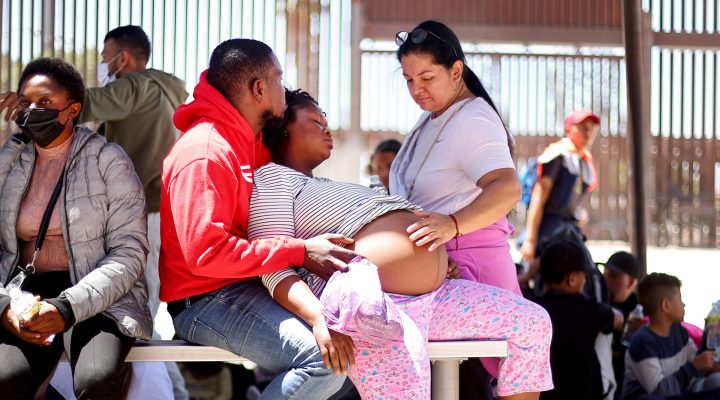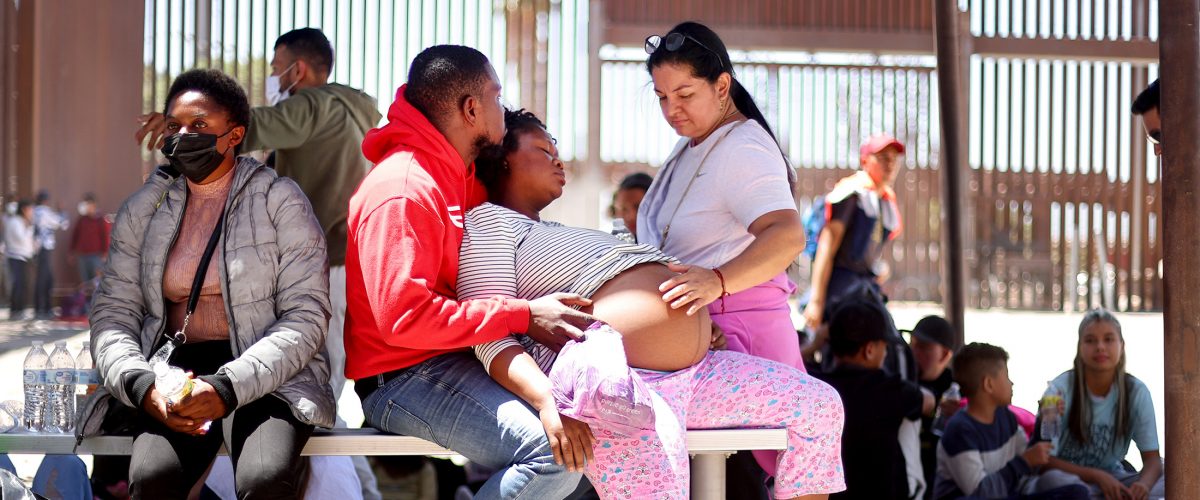Al Mohler is obsessed with declining birth rates, and Donald Trump is obsessed with villainizing immigrants. It turns out there’s a connection between these two ideas.
New research from Statista, reported by Katharina Buchholz, illustrates that without immigration, a dozen U.S. states would be shrinking in population. Among those are the Electoral College battleground states of Michigan and Ohio.
That reality has taken center stage in recent weeks as Trump and his running mate, JD Vance, have vilified Haitian immigrants who have moved en masse to Springfield, Ohio, a town facing declining population. In reality, those immigrants have brought new life to the town and filled essential jobs while enriching the community.
But Trump and Vance have portrayed them as pet-eating thugs who endanger the good white citizenry — a flat-out lie.

Heather Cox Richardson
Historian Heather Cox Richardson explains why Trump and Vance keep telling this obvious lie: “The widespread ridicule of Trump’s statement has obscured that this attack on Ohio’s immigrants is part of an attempt to regain control of the Senate. Convincing Ohio voters that the immigrants in their midst are subhuman could help Republicans defeat popular Democratic incumbent senator Sherrod Brown, who has held his seat since 2007. Brown and Montana’s Jon Tester, both Democrats in states that supported Trump in 2020, are key to controlling the Senate.”
Yet in Springfield, at least, the gambit appears to have backfired — as even Republican elected officials are calling out the GOP lies. Locally, these leaders know their Haitian friends are good citizens and good workers, not the thugs and rapists and “bad people” Trump portrays them as being.
This illustrates a two-way tug that could rupture the Republican lie about immigrants as a threat. Behind the fear stoked by Trump and his allies is the reality that white evangelical America is shrinking. Without gerrymandering in many red states — like Texas where I live — Republicans would not control state legislatures and would become a minority in the U.S. House of Representatives.
That’s one reason Mohler, the Trump-supporting president of Southern Baptist Theological Seminary, is in a panic about declining birth rates. As Rick Pidcock pointed out in a recent BNG analysis piece, Mohler said in May this year that declining birth rates are “such a significant issue that, quite frankly, other issues pale in significance,” and claimed this “threatens the very existence of human civilization” and “can only be described as catastrophic.”
Mohler and Vance find common cause in blaming all this on women — especially women who are focused on careers that take them away from birthing so many babies.
Taken on a state-by-state level, this question looks all the more interesting. That’s what Buchholz gets at with her Statista report.

“It is a fairly well-known fact that several U.S. states — among them prominent coastal ones — are losing population,” she writes. “One major factor in this development that started some years ago (even before the pandemic) has been domestic outmigration, which is sometimes tied to high cost of living. At the same time, international immigration diversified in the United States location-wise, eventually tipping the scales for these states despite many still registering more births than deaths, including California, New York, Hawaii and Illinois.
“Less well known,” she adds, “is which states depend on migration — mostly the international type — to continue to grow. These places are a more diverse bunch and include both places that need to compensate for falling birth rates and places that are struggling with people moving to other parts of the country (or both). This is especially interesting among the renewed discussion about U.S. immigration in the election year 2024.”

Katharina Buchholz
Without legal international migration, both Michigan and Ohio would have lost population, she notes. “Both states have negative net births, meaning more people die each year than are born, and negative or very low domestic net immigration. However, tens of thousands of people move to both states each year from abroad (even after subtracting those who leave for a different country), compensating for the above losses.”
Keeping population totals stable affects the number of Electoral College votes a state gets and the number of representatives in Congress. If a state loses population, it loses seats in Congress and Electoral College votes.
The Republican goal, then, is to keep state population totals stable by whatever means but not to tip the scale on the balance of power so that more people vote for Democrats than Republicans.
Mohler gets at this problem by urging white evangelicals to have more babies, and Trump gets at it by vilifying the immigrants who are filling in the birth rate gap.
Richardson, the historian, sees a possible parallel with something that happened in 1890.
Republicans had lost the popular vote in 1888 but installed Republican Benjamin Harrison in the Oval Office through the Electoral College. They knew the Democrats “would soon far outnumber their own voters. So they set out to guarantee that they could never lose the Senate, which should enable them to kill popular Democratic legislation.
“But they misjudged the electorate, and in the 1890 midterm election, voters gave control of the House to the Democrats by a margin of two to one, and control of the Senate came down to a single seat, that of a senator from South Dakota. In those days, state legislatures chose their state’s senators, and shortly after it became clear that control of the Senate was going to depend on that South Dakota seat, U.S. Army troops went to South Dakota to rally voters by putting down an ‘Indian uprising’ in which no people had died and no property had been damaged.”
Related articles:
JD Vance and Al Mohler use fuzzy math to sound an alarm on falling birth rates
Springfield nonsense is part of plan to dehumanize immigrants, UnidosUS president warns
Demographic decline is upon us — what’s next? | Analysis by Erich Bridges


